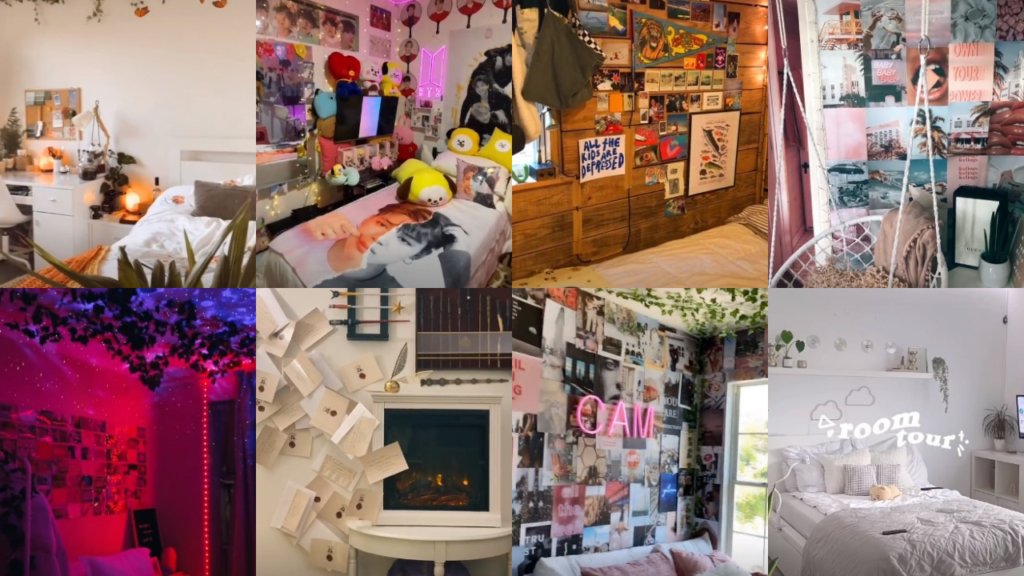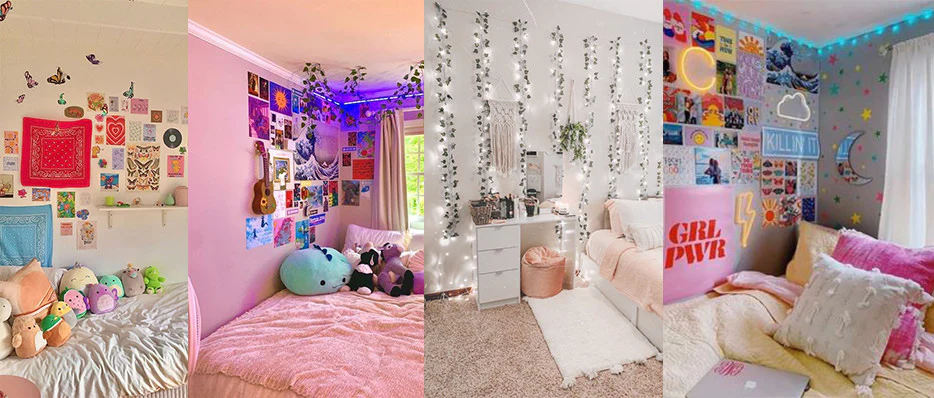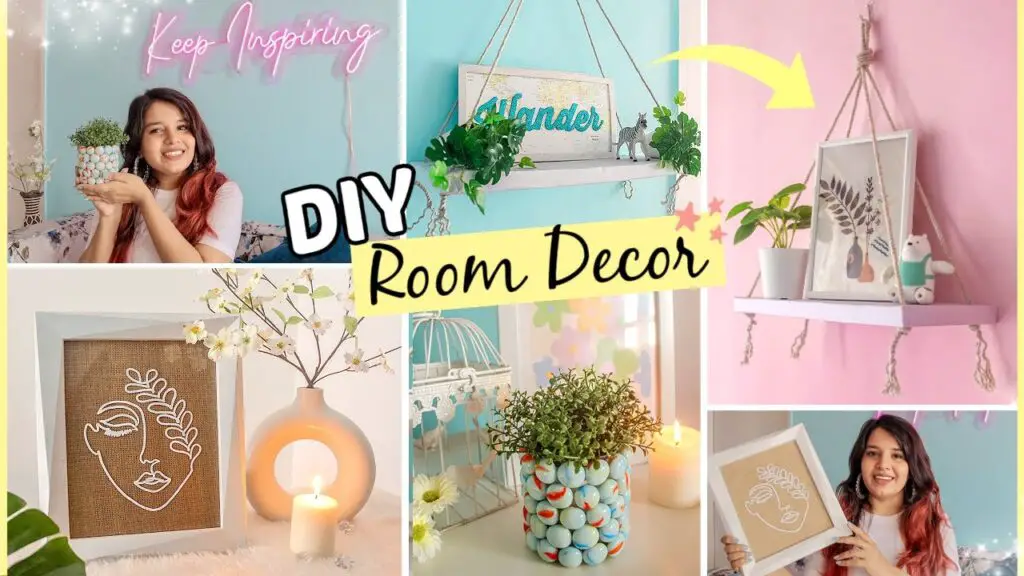Welcome to my blog, where I share my expertise as a professional decorator with over a decade of experience. Today, I want to delve into the exciting topic of creating passive income from Pinterest aesthetic room ideas.
Transforming your passion for decor’s Pinterest Aesthetic Room into a profitable venture is not only possible but can be incredibly rewarding if you are equip with these 12 easy tips contain in this article.
In this blog post, I’ll guide you through proven strategies and practical tips to monetize your Pinterest aesthetic room inspiration and generate passive income.
Let’s dive in!
12 Easy Ways Of Creating Passive Income From Pinterest Aesthetic Room Ideas

Below are practical and tested method of creating Passive income from Pinterest aesthetic room ideas:
A: Curate and Share Inspiring Aesthetic Room Ideas
Learn how to curate a visually stunning Pinterest board filled with aesthetic room ideas. Discover the power of high-quality images, cohesive themes, and engaging descriptions.
Curating and sharing inspiring aesthetic room pins on Pinterest can help attract a larger audience and increase your chances of monetizing your Pinterest presence.
Follow this step-by-step guide to curate and share aesthetic room pins effectively:
- Identify Your Target Audience: Define your target audience for aesthetic room inspiration. Consider factors such as their preferred decor styles, demographics, and interests. Understanding your audience will help you curate pins that resonate with them.
- Create a Pinterest Business Account: If you haven’t already, sign up for a Pinterest business account. This account type provides access to valuable analytics and features that can support your Pinterest marketing efforts.
- Set Up Boards for Aesthetic Room Inspiration: Create Pinterest boards specifically dedicated to aesthetic room inspiration. Use descriptive and keyword-rich board names, such as “Aesthetic Room Ideas,” “Dreamy Bedroom Decor,” or “Cozy Living Spaces.” Organize your boards based on different room types or decor themes to make it easier for users to navigate.
- Find High-Quality Pins: Search for high-quality aesthetic room pins that align with your target audience’s preferences. Look for inspiration on Pinterest itself, home decor blogs, interior design websites, and even Instagram. Ensure that the pins you select are visually appealing, well-composed, and represent the aesthetic style you want to showcase.
- Pin with a Purpose: When pinning aesthetic room ideas, be strategic in your approach. Choose pins that not only inspire but also align with your monetization goals. For example, if you plan to utilize affiliate marketing, select pins that feature products or elements that can be monetized through affiliate links.
- Add Engaging Descriptions: When pinning, include engaging and descriptive captions. Use keywords relevant to the pin’s content and your target audience’s interests. Craft compelling descriptions that entice users to engage with your pins and click through to your website or blog.
- Collaborate with Other Pinners: Engage with other Pinterest users and collaborate with them on group boards or shared boards dedicated to aesthetic room inspiration. Collaborations can help increase the visibility of your pins and attract a larger audience. Reach out to fellow pinners in your niche or join existing group boards to expand your reach.
- Utilize Rich Pins: Implement Rich Pins, a feature offered by Pinterest, to enhance your aesthetic room pins. Rich Pins provide additional information and context about the content being pinned, such as product details, pricing, or recipe ingredients. By enabling Rich Pins, you provide users with more valuable information and increase the likelihood of engagement.
- Stay Consistent and Engage: Consistently curate and share aesthetic room pins to keep your Pinterest profile active and engaging. Aim for a balance between your own original pins and curated pins from other sources. Engage with your audience by responding to comments, following other pinners, and actively participating in relevant group boards.
- Monitor and Analyze: Regularly monitor your Pinterest analytics to understand which pins and boards are performing well. Pay attention to metrics such as impressions, saves, clicks, and engagement rates. Analyzing your data will help you refine your pinning strategy and identify opportunities for improvement.
By creating a captivating aesthetic room inspiration board, you’ll attract a larger audience and increase your chances of monetizing your Pinterest presence.
B: Affiliate Marketing: Partner with Brands for Passive Income:
Explore the world of affiliate marketing and discover how to partner with relevant brands that align with your aesthetic room niche.
Choosing the right affiliate programs, optimizing your affiliate links, and effectively promoting products are crucial steps to maximize your earnings in affiliate marketing.
Here’s a step-by-step guide to help you navigate through these processes:
- Research and Identify Relevant Affiliate Programs:
- Start by identifying affiliate programs that align with your niche and the aesthetic room ideas you promote.
- Look for reputable affiliate networks, such as Amazon Associates, ShareASale, or Commission Junction, that offer a wide range of relevant products.
- Research individual brands or companies that have their own affiliate programs and assess if their products resonate with your audience.
- Evaluate Commission Structures and Payout Terms:
- Compare commission rates among different affiliate programs. Look for programs that offer competitive rates and fair compensation for your efforts.
- Pay attention to the payout terms, such as the minimum threshold for withdrawals and the payment frequency. Choose programs that fit your financial goals and preferences.
- Review Product Quality and Reputation:
- Ensure that the products or services offered by the affiliate programs are of high quality and align with your values.
- Check customer reviews and ratings to gauge the reputation of the brands or products. Promoting reputable products will enhance your credibility and trustworthiness.
- Assess Affiliate Program Resources and Support:
- Look for affiliate programs that provide valuable resources, such as promotional banners, product images, and marketing materials.
- Consider the level of support provided by the program, including dedicated affiliate managers or customer support, as it can greatly impact your success in promoting their products.
- Optimize Your Affiliate Links:
- Use clean, concise, and visually appealing affiliate links that are easy to remember and share.
- Consider using link shortening tools, such as Bitly or Pretty Links, to make your links more presentable and trackable.
- Cloak your affiliate links to make them look more professional and trustworthy. WordPress plugins like ThirstyAffiliates can help with this.
- Disclose Affiliate Relationships:
- Transparency is key in affiliate marketing. Clearly disclose your affiliate relationships to your audience to maintain trust and compliance with legal regulations.
- Include a disclosure statement on your website or blog, and when promoting products, mention that you may earn a commission through affiliate links.
- Create Engaging Content:
- Develop high-quality, valuable, and engaging content around the products you’re promoting. Provide detailed descriptions, benefits, and personal experiences to entice your audience.
- Use visuals such as appealing images, infographics, or videos to showcase the products and capture attention.
- Implement Strategic Promotion Tactics:
- Leverage the power of social media platforms, including Pinterest, by creating eye-catching pins that feature the products. Use persuasive and compelling descriptions to encourage click-throughs.
- Write product reviews, comparisons, or tutorials on your blog or website, highlighting the benefits and features of the products. Incorporate your affiliate links naturally within the content.
- Consider offering special promotions, exclusive discounts, or limited-time offers to your audience to encourage conversions.
- Track Performance and Adjust Strategies:
- Monitor your affiliate marketing performance using tracking tools and analytics provided by the affiliate programs or third-party software.
- Analyze the conversion rates, click-through rates, and earnings generated from different products and promotions.
- Based on the data, adjust your promotional strategies, optimize underperforming campaigns, and focus on promoting products that resonate well with your audience.
Remember, building a successful affiliate marketing business takes time, patience, and continuous learning.
Stay consistent, experiment with different strategies, and adapt based on feedback and data to optimize your earnings.
C: Create and Sell Digital Products With Aesthetic Room Ideas:
Unleash your creativity by designing and selling digital products inspired by aesthetic room ideas. From printable wall art and mood board templates to e-books on decor tips, the possibilities are endless.
Creating digital products and setting up an online store is an excellent way to monetize your aesthetic room ideas and reach a wider audience.
Follow this step-by-step guide to navigate the process successfully:
- Identify Your Digital Product: Decide on the type of digital product you want to create. It could be printable wall art, e-books on room design tips, mood board templates, or even online courses. Ensure that your chosen product aligns with your target audience’s needs and interests.
- Research and Plan: Conduct market research to identify demand for your chosen digital product. Explore what similar products are already available and analyze their features, pricing, and target audience. Use this information to refine your product idea and develop a unique selling proposition.
- Create Your Digital Product: Utilize design tools like Canva, Adobe Creative Suite, or online course platforms to create your digital product. Focus on delivering high-quality content and visuals that resonate with your audience. Ensure that your product is well-organized, visually appealing, and user-friendly.
- Set Up an Online Store: Choose a platform to host your online store. Popular options include Shopify, WooCommerce, or Etsy. Sign up for an account and follow the platform’s instructions to set up your store. Customize your store’s branding, product listings, and payment options.
- Create Compelling Product Descriptions: Write engaging and informative product descriptions that highlight the benefits and features of your digital product. Use persuasive language, include keywords, and provide clear instructions on how customers will access and utilize the product.
- Determine Pricing: Research pricing strategies for similar digital products and determine a competitive yet profitable price point. Consider factors like production costs, perceived value, and the uniqueness of your offering. Test different price points and adjust as needed to find the optimal balance.
- Set Up Secure Delivery: Choose a secure delivery method for your digital products. This can be done through the e-commerce platform you’re using or by integrating with third-party delivery services. Ensure that your customers receive their purchased products instantly and securely.
- Implement Marketing Strategies: Promote your digital products to reach a wider audience. Utilize various marketing channels, including:
- Leverage Pinterest: Create eye-catching pins that showcase your digital products and link them to your online store. Utilize keywords, engaging visuals, and compelling descriptions to attract clicks and drive traffic to your store.
- Blog and Content Marketing: Write informative blog posts, create helpful content, and incorporate calls-to-action that lead readers to your digital products.
- Email Marketing: Build an email list of interested subscribers and send regular newsletters or product updates. Offer exclusive discounts or incentives to encourage conversions.
- Social Media Promotion: Utilize platforms like Instagram, Facebook, and Twitter to share product highlights, customer testimonials, and engaging content related to your digital products.
- Collaborations and Influencer Marketing: Partner with influencers or complementary brands in the decor industry to promote your digital products to their audiences. This can help expand your reach and credibility.
- Provide Excellent Customer Support: Ensure you have a system in place to address customer inquiries and provide support promptly. Offer clear instructions on how to access and use your digital products, and be responsive to any customer concerns or technical issues.
- Monitor and Refine: Regularly monitor your online store’s performance, analyze sales data, and gather customer feedback. Use this information to refine your marketing strategies, improve your digital products, and optimize your store’s conversion rate.
By following these steps, you can successfully create digital products, set up an online store, and promote your offerings to reach a wider audience.
Remember to stay consistent, continuously improve your products and marketing efforts, and adapt to the evolving needs of your target audience.
Good luck with your digital product journey!
D: Collaborate with Brands and Influencers In Aesthetic Room Niche:

Discover the power of collaborations to amplify your reach and income potential.
Learn how to partner with brands and influencers in the home decor niche to create sponsored content, guest posts, or joint Pinterest campaigns.
Building relationships, negotiating contracts, and leveraging your network for collaborations are essential aspects of expanding your reach and generating income from your aesthetic room ideas.
Here are valuable insights to guide you through these processes:
- Building Relationships:
- Identify potential partners: Research and identify individuals, brands, or influencers in the decor industry who align with your aesthetic room ideas and target audience.
- Engage authentically: Connect with potential partners by engaging with their content, leaving thoughtful comments, and sharing their work. Build a genuine relationship by showing interest in their work and demonstrating your expertise.
- Offer value: Find ways to provide value to your potential partners. This could be through guest blog posts, collaborations on social media, or sharing their content with your audience. By offering value, you establish yourself as a valuable collaborator.
- Attend industry events: Network at industry events, conferences, or online webinars. Engage in conversations, exchange contact information, and follow up with potential collaborators after the event.
- Foster long-term relationships: Nurture relationships with your partners beyond a single collaboration. Maintain regular communication, support their work, and explore opportunities for continued collaboration in the future.
- Negotiating Contracts:
- Define objectives and expectations: Clearly articulate your objectives and expectations for the collaboration. Discuss deliverables, timelines, payment terms, and any other relevant details.
- Research market rates: Research industry standards and market rates for collaborations of similar nature. Use this information to negotiate fair compensation for your work or services.
- Protect your interests: Review contracts carefully, ensuring they align with your goals and protect your intellectual property rights. Seek legal advice if necessary to ensure you’re entering into a fair and beneficial agreement.
- Flexibility and compromise: Be open to negotiation and finding a mutually beneficial agreement. Collaborations are a partnership, so both parties should feel satisfied with the terms.
- Leveraging Your Network:
- Identify your network: Identify individuals within your network who can contribute to your collaborations. This could include fellow decorators, bloggers, industry experts, or influencers.
- Utilize social media platforms: Leverage platforms like LinkedIn, Instagram, or Twitter to connect with professionals in your industry. Engage in conversations, share insights, and showcase your expertise to expand your network.
- Attend industry events and workshops: Participate in industry events or workshops to meet like-minded individuals and expand your network. Connect with attendees, speakers, or panelists to explore collaboration opportunities.
- Seek referrals and recommendations: Ask for referrals or recommendations from your existing network. They may be able to introduce you to potential collaborators or provide insights on working with specific individuals or brands.
Remember, building relationships and negotiating contracts require patience, professionalism, and effective communication.
Cultivate genuine connections, be transparent about your expectations, and strive for mutually beneficial collaborations.
By leveraging your network effectively, you can create valuable partnerships that amplify your reach, increase your income, and elevate your aesthetic room ideas.
E: Monetize Your Aesthetic Room Ideas Blog and Website:
Harness the potential of your blog or website by implementing various monetization strategies.
From display advertising and sponsored posts to creating premium content or offering consulting services, I have already shared proven techniques to generate passive income through your online platform. Access it HERE.
F: Optimize Your Pinterest Aesthetic Room Ideas SEO:
Master the art of Pinterest search engine optimization (SEO) to increase your visibility and attract a larger audience. I have provided on this blog; practical tips on keyword research, optimizing pin descriptions and titles, and utilizing Pinterest analytics to refine your strategy and drive more traffic to your content.
G: Promote Your Services as a Professional Decorator:
Highlight your expertise and offer your services as a professional decorator specializing in aesthetic room design. Showcase your portfolio on Pinterest, share testimonials, and provide a clear call-to-action for potential clients to reach out to you.
This Article will guide you on how to effectively market your services and attract clients seeking your expertise in creating their dream aesthetic rooms.
H: Create and Sell Physical Products With Aesthetic Designs:

Expand your income streams by translating your aesthetic room ideas into physical products. Explore the possibilities of designing and selling decor items, such as throw pillows, wall decals, or decorative accessories. Learn about sourcing materials, setting up an online store, and effectively marketing your products to reach your target audience below.
Step-by-Step Guide: Sourcing Materials, Setting Up an Online Store, and Effectively Marketing Your Products
- Define Your Product Line and Target Audience: Identify the specific aesthetic room products you want to create and sell. Determine your target audience, considering factors such as their style preferences, demographics, and purchasing power. This will help you tailor your product offerings and marketing efforts accordingly.
- Source Materials and Suppliers: Research and identify reliable suppliers or manufacturers for the materials needed to create your products. Look for suppliers that offer quality materials at competitive prices. Consider factors such as shipping costs, lead times, and minimum order quantities. Request samples and thoroughly evaluate the materials before finalizing your sourcing decisions.
- Create a Brand Identity: Develop a strong brand identity that resonates with your target audience. This includes creating a memorable brand name, designing a logo, selecting color schemes, and developing a cohesive visual style that aligns with your aesthetic room products. Consistency in branding helps build recognition and trust among your customers.
- Set Up an Online Store: Choose an e-commerce platform or marketplace to set up your online store. Popular options include Shopify, WooCommerce, Etsy, or Amazon. Consider factors such as ease of use, customization options, payment gateways, and shipping integrations. Set up your store, upload high-quality product images, and write compelling product descriptions that highlight the unique features and benefits of your items.
- Configure Product Pricing and Shipping: Determine the pricing strategy for your products, taking into account factors such as material costs, production expenses, overheads, and desired profit margins. Research competitor pricing to ensure your prices are competitive in the market. Set up shipping options and calculate shipping costs based on the weight and dimensions of your products, as well as the customer’s location.
- Optimize Product Listings for Search: Implement effective search engine optimization (SEO) techniques to improve the visibility of your products in search results. Use relevant keywords in your product titles, descriptions, and tags to increase the chances of appearing in relevant searches. Consider utilizing keyword research tools to identify popular search terms related to your aesthetic room products.
- Develop Compelling Product Descriptions: Write captivating and informative product descriptions that highlight the unique selling points, features, and benefits of your products. Use persuasive language, emphasize the quality and craftsmanship, and address any customer concerns or frequently asked questions. Incorporate storytelling elements to engage potential buyers and make a connection with them.
- Implement Marketing Strategies: Develop a comprehensive marketing plan to promote your aesthetic room products. Utilize various marketing channels such as social media, content marketing, email marketing, influencer partnerships, and paid advertising to reach your target audience. Create engaging and visually appealing content that showcases your products in real-life settings, and leverage customer testimonials and reviews to build trust.
- Build an Engaged Online Community: Foster a community around your brand and products by engaging with your audience on social media platforms, hosting contests or giveaways, and encouraging user-generated content. Respond to customer inquiries and feedback promptly, and provide exceptional customer service to build a loyal customer base that advocates for your brand.
- Analyze, Iterate, and Improve: Regularly analyze your online store’s performance, marketing efforts, and customer feedback. Utilize analytics tools to gain insights into visitor behavior, conversion rates, and sales data. Make data-driven decisions to optimize your product offerings, marketing strategies, and customer experience. Continuously seek ways to improve and refine your online store to drive better results.
By following these steps, you can effectively source materials, set up an online store, and market your aesthetic room products to reach your target audience. Remember that success requires dedication, ongoing evaluation, and adaptation to the ever-evolving market dynamics.
Stay committed, stay innovative, and provide value to your customers to achieve long-term success in your online business.
I: Offer Decoration Online Courses or Workshops:
Share your knowledge and passion for aesthetic room design by offering online courses or workshops. Teach others how to create their own Pinterest-worthy spaces and monetize their aesthetic room ideas.
The guide on the process of designing and launching your course, including creating engaging content, setting pricing, and marketing your educational offerings can be accessed HERE.
J: Utilize Sponsored Content and Collaborations:
Partner with brands or businesses in the home decor industry to create sponsored content or collaborations centered around aesthetic room ideas.
Discover how collaborations can enhance your passive income potential while showcasing your expertise.
Finding Relevant Partnerships, Negotiating Fair Compensation, and Maintaining Authenticity in Sponsored Content:
- Identify Relevant Brands and Influencers: Research brands and influencers in the home decor and aesthetic room niche that align with your brand values and target audience. Look for those whose aesthetic and values complement your own. Explore social media platforms, industry events, and online directories to discover potential partnership opportunities.
- Engage in Meaningful Outreach: Reach out to brands and influencers with personalized and thoughtful pitches. Clearly communicate how your aesthetic room products and expertise align with their brand or content. Demonstrate the value you can bring to their audience and express genuine interest in collaborating on a mutually beneficial partnership.
- Assess Partnership Compatibility: Evaluate potential partners based on their audience demographics, engagement rates, and brand reputation. Consider factors such as their brand image, communication style, and previous collaborations. Ensure that the partnership aligns with your values and objectives, and that it will resonate with your audience.
- Define Objectives and Deliverables: Clearly define the objectives, expectations, and deliverables of the partnership. Discuss the type of content to be created, the timeline, and any exclusivity requirements. Align on the goals and ensure a shared understanding of how the sponsored content will benefit both parties involved.
- Negotiate Fair Compensation: When discussing compensation, consider factors such as your reach, engagement rates, the effort required for the content creation, and the value you bring to the partnership. Research industry standards and benchmarks to establish a fair compensation range. Be prepared to negotiate and find a mutually beneficial agreement that satisfies both parties.
- Maintain Authenticity and Transparency: Maintaining authenticity is crucial to the success of sponsored content. Ensure that the sponsored content aligns with your brand’s values and aesthetic. Create content that feels organic and natural to your usual style, while incorporating the necessary disclosures as per advertising guidelines. Transparently communicate any sponsorship or partnership to your audience, fostering trust and maintaining your credibility.
- Provide Value to the Partner and Audience: Focus on providing value to both your partner and your audience through the sponsored content. Craft engaging and informative content that showcases your aesthetic room products while addressing the needs and interests of your audience. Strive to create content that educates, inspires, or solves a problem, rather than solely promoting the partner’s brand.
- Track and Measure Results: Implement tracking mechanisms to measure the effectiveness of the sponsored content. Monitor key performance indicators such as engagement, click-through rates, conversions, and audience feedback. Share these insights with your partner to demonstrate the impact of the collaboration and foster a data-driven approach for future partnerships.
- Nurture Long-Term Relationships: Building long-term relationships with brands and influencers can lead to repeat collaborations and sustained success. Maintain open lines of communication, deliver on agreed-upon commitments, and provide exceptional customer service throughout the partnership. Cultivate these relationships as valuable connections within the industry.
- Regularly Evaluate and Adjust: Continuously assess the success and impact of sponsored content collaborations. Solicit feedback from your audience, partner, and your own team to identify areas for improvement. Adapt your strategies and approaches based on the insights gained to optimize future partnerships and maintain authenticity in your sponsored content.
By following these insights, you can find relevant partnerships, negotiate fair compensation, and ensure authenticity in your sponsored content. Striking the right balance between maintaining your brand integrity and delivering value to your partners and audience will lead to successful and fruitful collaborations.
K: Implement Effective Pinterest Marketing Strategies:
Maximize the reach and engagement of your aesthetic room ideas by implementing effective Pinterest marketing strategies. Learn about pinning strategies, utilizing group boards, optimizing pin descriptions, and leveraging Pinterest analytics to refine your approach.
With a solid Pinterest marketing strategy in place, you can drive more traffic to your blog, increase affiliate sales, and boost your passive income.
L: Diversify Your Income Streams:
Explore additional income streams related to aesthetic room ideas, such as writing sponsored blog posts, offering consulting services, or becoming a brand ambassador.
By diversifying your income streams, you can create a stable and sustainable source of passive income while expanding your professional opportunities in the decor industry.
Conclusion
Creating passive income from Pinterest aesthetic room ideas is an exciting and rewarding endeavor. By implementing the strategies outlined in this blog post, you can turn your passion for decor into a thriving source of income.
Whether through affiliate marketing, digital products, services, or collaborations, the key is to leverage your expertise and creativity to monetize your aesthetic room inspiration.
Embrace the possibilities, take action, and unlock the potential for financial success while sharing your love for aesthetic room design with others.
Discover more from Digital Wealth Guru
Subscribe to get the latest posts sent to your email.









Comments